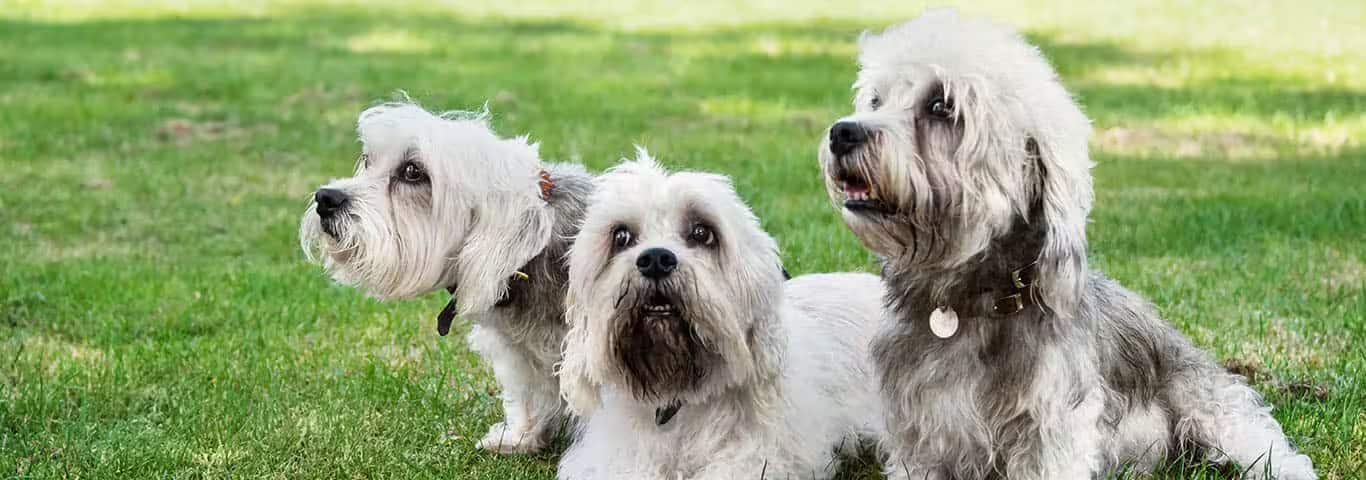The Dandie Dinmont terrier is friendly, playful and devoted. Not a pack animal by nature, this dog will usually bond to one person, although he can fit in nicely as a member of a family. The Dandie is an alert watchdog and, while not high strung or noisy, gives a surprisingly loud bark.
Although very loving, the Dandie Dinmont terrier can be somewhat stubborn and needs an assertive and patient trainer. This breed is not at all snappy, however, and makes an excellent companion for children. This dog is also calmer than most other terrier breeds.
This good-natured terrier is a pleasant addition to any home. If kept in a home without a yard, daily walks are necessary to keep the Dandie Dinmont from gaining weight. This dog usually gets along with anyone and enjoys company.
The Dandie does not like to be left alone, so a family that is gone often may want to provide another companion.
Daily brushing is necessary to keep the Dandie looking tidy. Stripping or clipping several times a year is needed to keep the breed's characteristic appearance. Special attention should be given to the "top-knot" to prevent mats and keep hair smooth. This dog sheds very little, however, and is generally a clean dog to keep in the house.
Originating on the borders of Scotland in the 1700s, the Dandie Dinmont terrier is the only breed to take its name from a character in literature. The name given to this breed is from a fictional character in the novel Guy Mannering by dog-lover Sir Walter Scott. The Dandie Dinmont terrier may be closely related to the Bedlington terrier, although the dog's ancestry probably includes strains of basset hound, border terrier and Cairn terrier.
The Dandie Dinmont terrier was originally developed for hunting small game and particularly became known for the ability to track otter. Over the years, the Dandie became more of a house pet and show dog, valued for a distinct appearance.





















